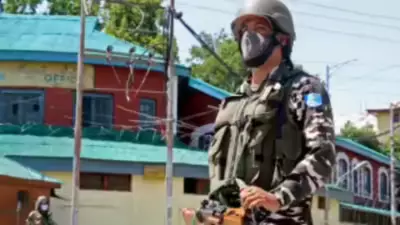
A crucial absence of scientific research on traffic patterns before implementation has led to the failure of Guwahati's ambitious Rs 80 crore Integrated Traffic Management System (ITMS), according to sources within Guwahati Smart City Limited (GSCL).
Ambitious Project Meets Harsh Reality
The ITMS project, launched in 2022 with grand ambitions to revolutionize Guwahati's traffic management, has fallen significantly short of its objectives. The system was designed to install sophisticated signal lights and artificial intelligence-powered cameras across the city to automatically detect traffic violations and ensure smoother traffic flow.
The primary goal was to address Guwahati's persistent traffic problems through advanced technology, thereby reducing dependence on manual traffic management by ground personnel. The project represented a significant step toward modernizing the city's infrastructure.
Implementation Challenges and Statistical Reality
According to official sources, the project faced numerous implementation challenges from the beginning. Originally scheduled for completion in 2023, the system was supposed to be operational at 95 strategic locations throughout Guwahati.
However, reality tells a different story. A GSCL source revealed that installations were completed at only about 64 locations, leaving significant gaps in coverage. The source further explained that multiple technical issues, including problems with signal light timers, have forced authorities to keep many signals switched off, with traffic still being managed manually at numerous junctions.
The situation becomes more concerning when considering Guwahati's vehicle statistics. Official data from the ministry of road transport and highways shows that 15.48 lakh vehicles of all categories are registered in Guwahati. This massive number of vehicles operates in a city spanning just over 200 square kilometers with a population of approximately 10 lakh people, creating immense pressure on the transportation infrastructure.
Broader Urban Planning Issues
Urban planning experts have identified additional factors contributing to the traffic chaos. They point to flawed road geometry at several key locations, including major intersections like Ganeshguri and Paltan Bazar, as significant contributors to congestion problems.
In response to these challenges, the directorate of town and country planning attempted an innovative approach last year. They implemented 'tactical urbanism' at Ganeshguri, one of the city's largest and most complex multi-junctions. This intervention involved creating colored 'traffic islands' at junctions, developing proper footpaths, and installing bollards.
Interestingly, this lower-tech approach proved surprisingly successful, demonstrating that sometimes simpler, well-planned interventions can be more effective than expensive technological solutions implemented without proper groundwork.
The failure of the ITMS project serves as a crucial lesson for urban development authorities: comprehensive scientific studies and understanding local conditions must precede the implementation of expensive technological systems, regardless of how advanced they might be.





